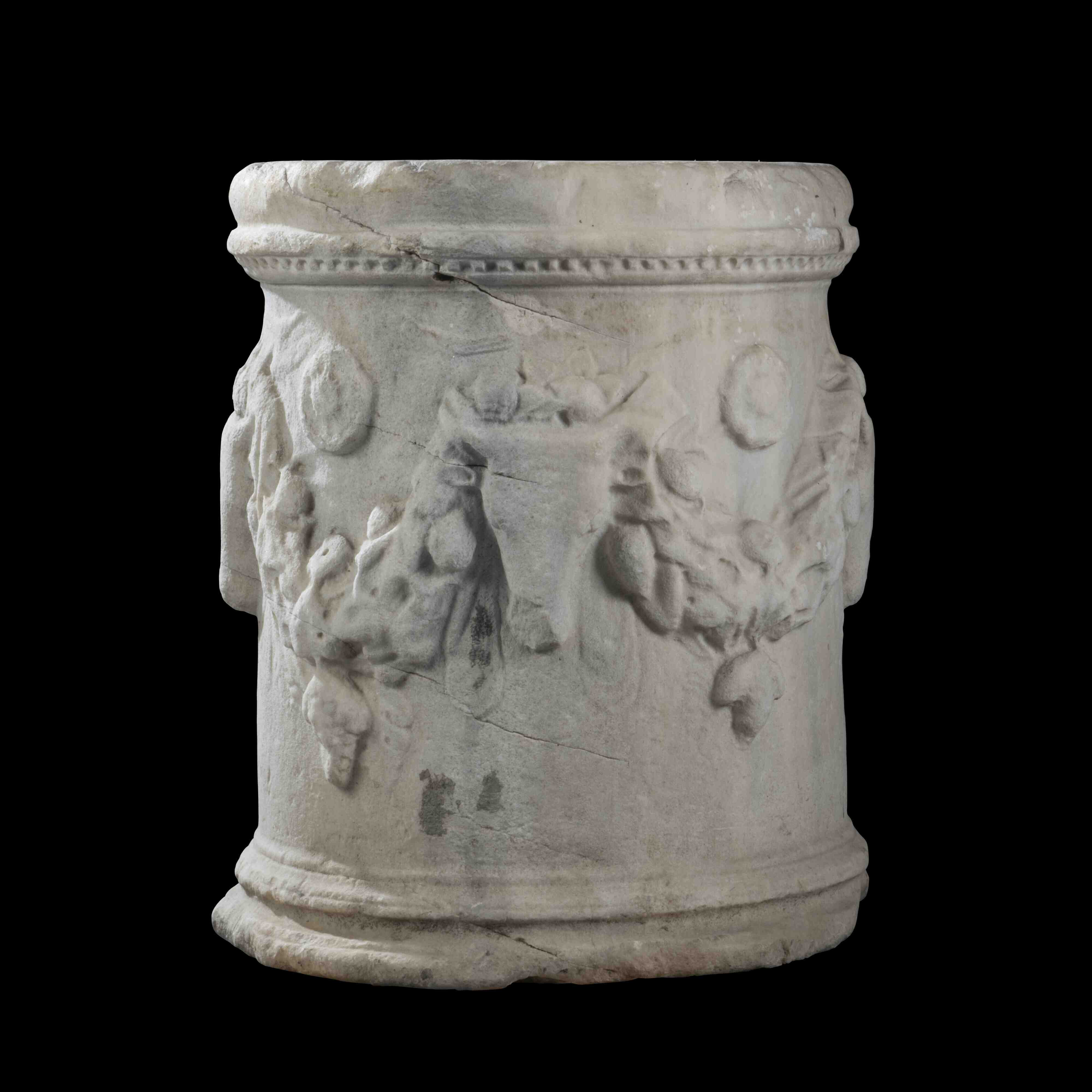Large Marble Bowl
Art market, Switzerland
European private collection, acquired 1987
Christie's Antiquities, London, 2013
Private collection, Switzerland
Private collection, Liechtenstein
J. Thimme (ed.), Art and Culture of the Cyclades, Karlsruhe, 1976, 319-319, fir. 295-305
P. Getz-Gentle, Stone Vessels of the Cyclades in the Early Bronze Age, Pensyylvania 1996, pl. 50, 52, 53 and 54
P. Getz-Gentle, Early Cycladic Art in North American Collections, Virginia 1987, 300-304, nos. 122.126
C. Renfrew, The Cycladic Spirit: Masterpieces from Nicholas P. Goulandris Collection, New York, 1991, pp. 69, fig. 39
This large bowl’s shallow rounded form represents one of the most popular forms of Early Cycladic II stone vessels. The plain, but timeless shape, reflects a sense of balance and simplicity. The interior surface is smooth with a thin yellowish patina. The raised, rounded rim is contoured on the interior, with traces of red pigment. The exterior convex profile is uniformly carved with traces of tool marks. The bowl was carved from a block of white marble.
Note
According to Pat Getz-Gentle, Stone Vessels of the Cyclades in the Early Bronze Age, Pennsylvania, 1996, p. 99, in the Early Cycladic II period, the plain bowl 'superseded the complex EC I kandilla as the most popular form for non-quotidian use.' Affordability, as well as function, likely led to this change, suggesting that modification in funerary practices and other religious rites affected the popularity and frequency of the form. This kind of vessel, was most probably used during funerary rituals, as a large number of them were found in a funerary context alongside several Cycladic marble reclining figures.











